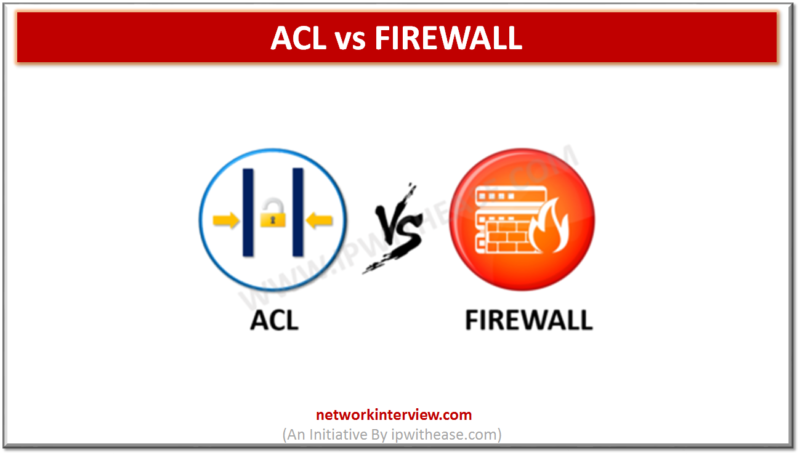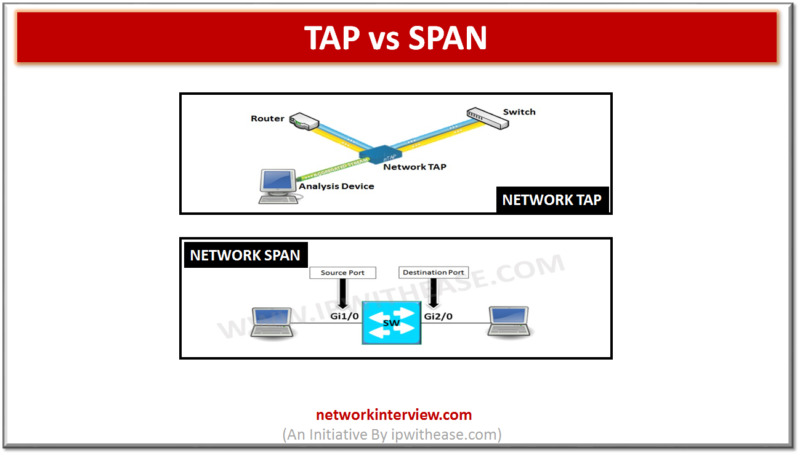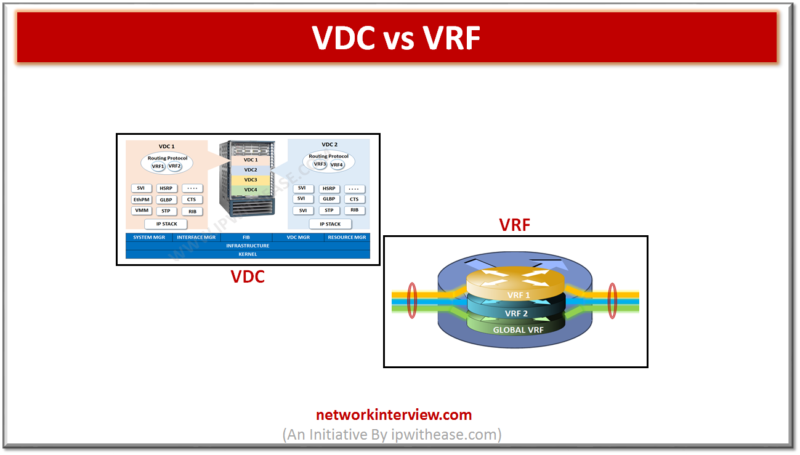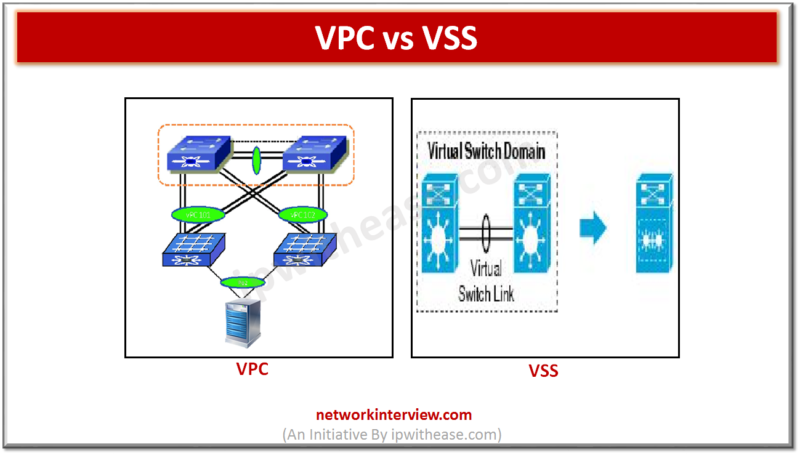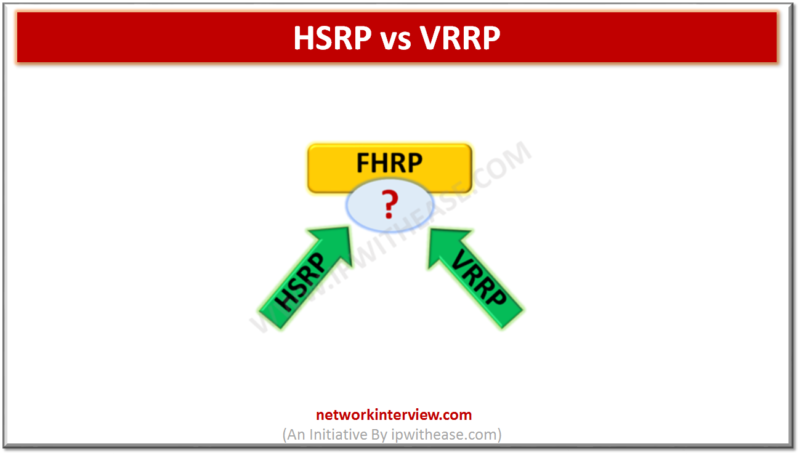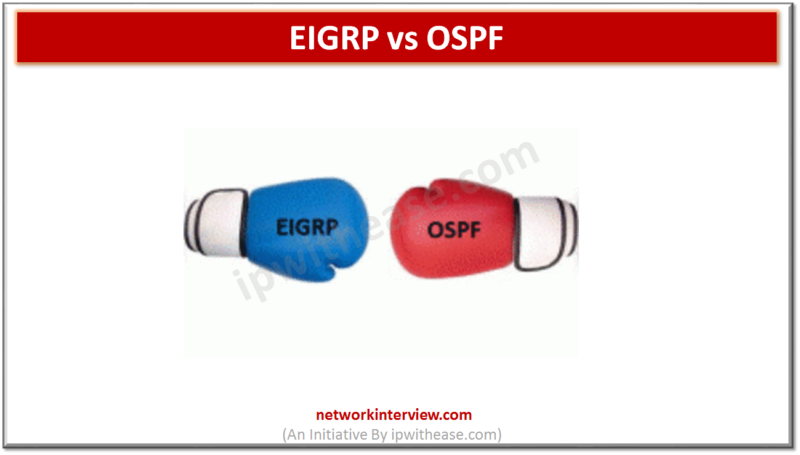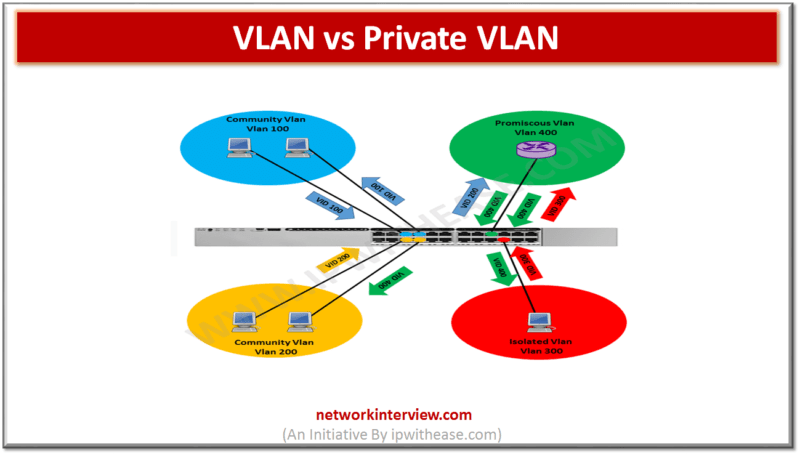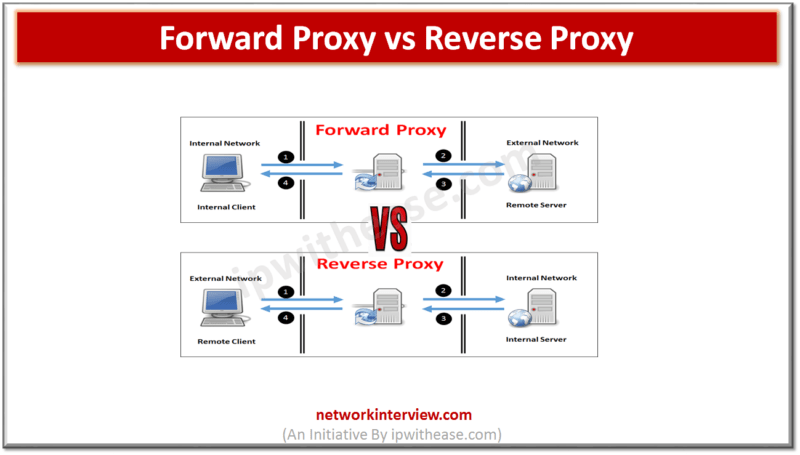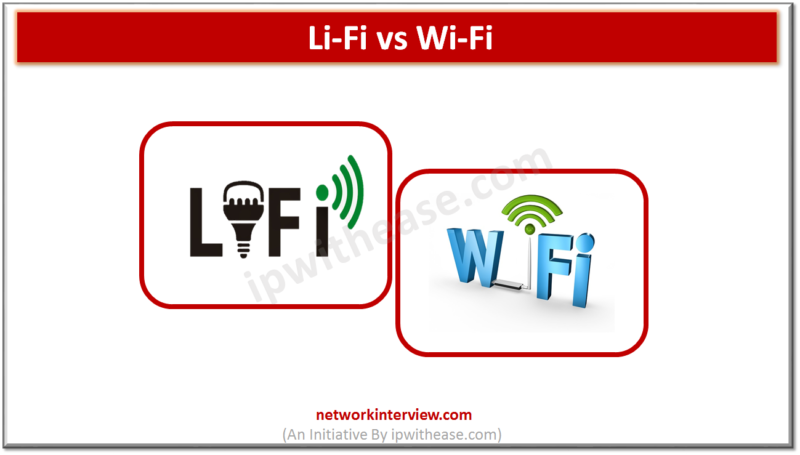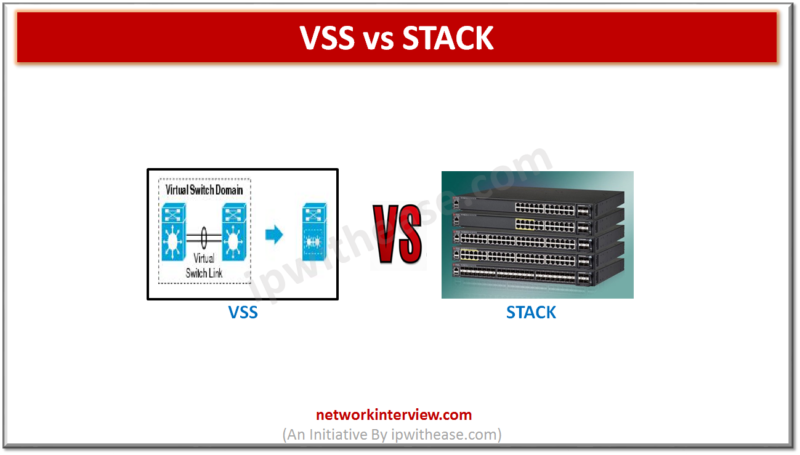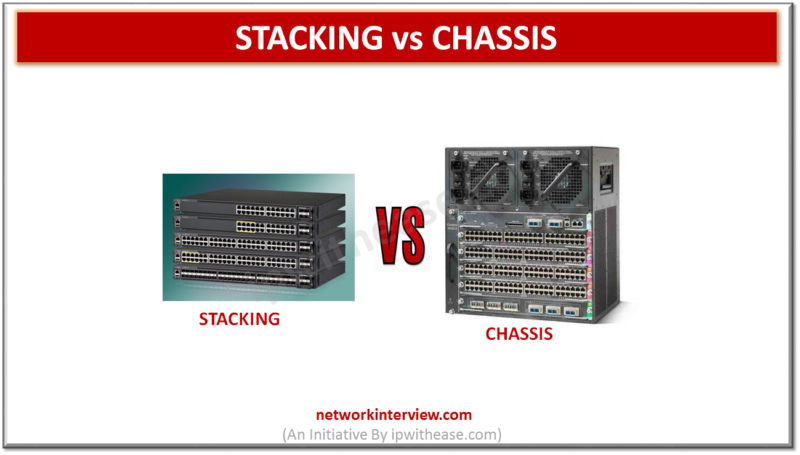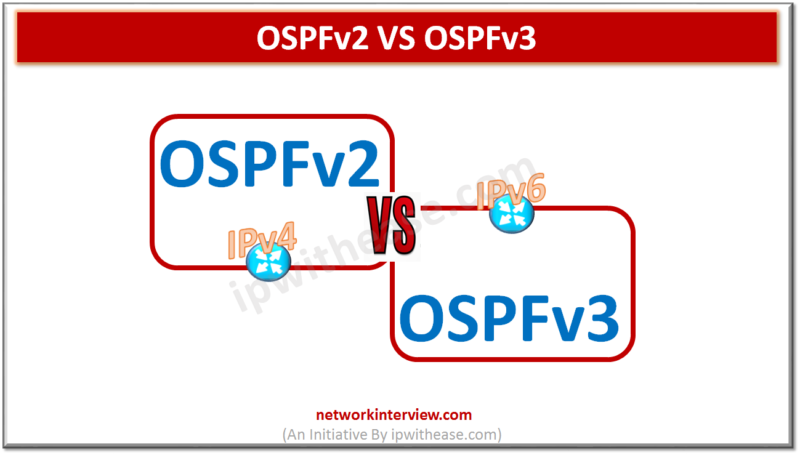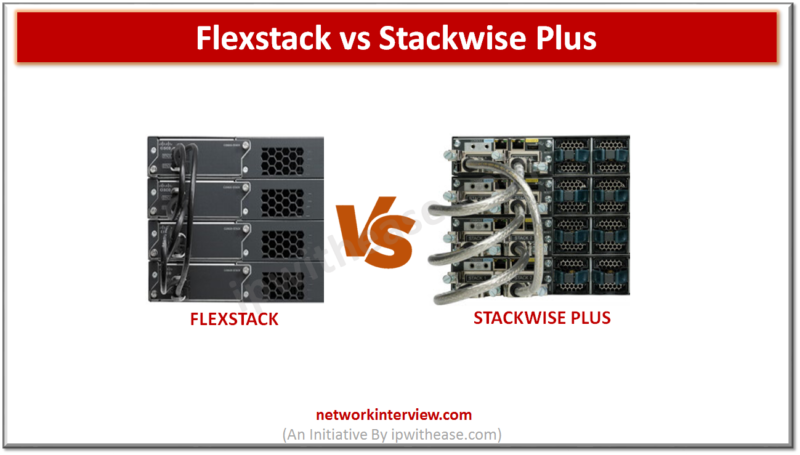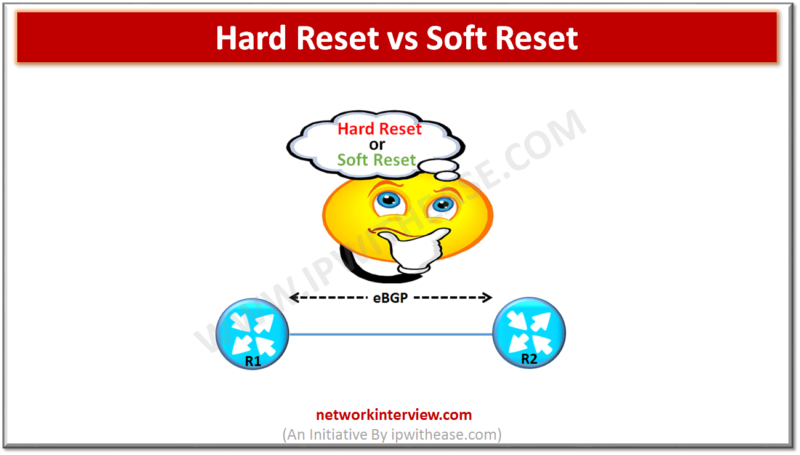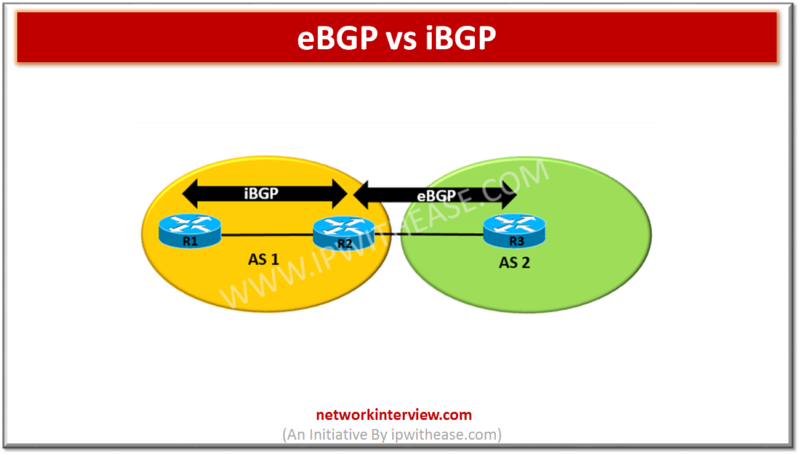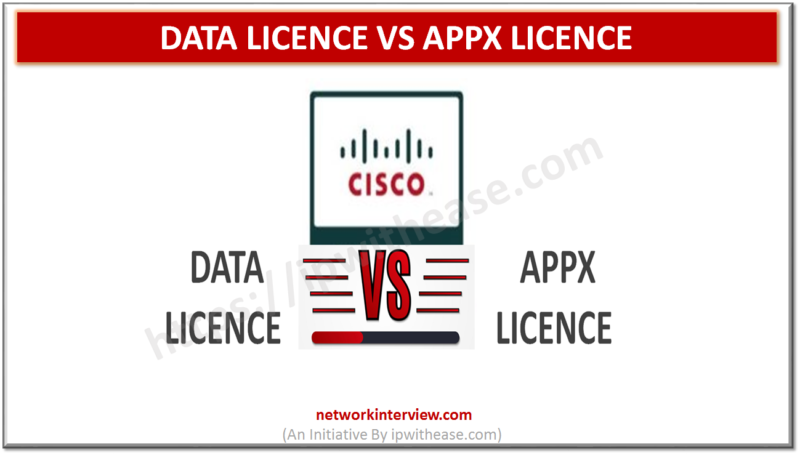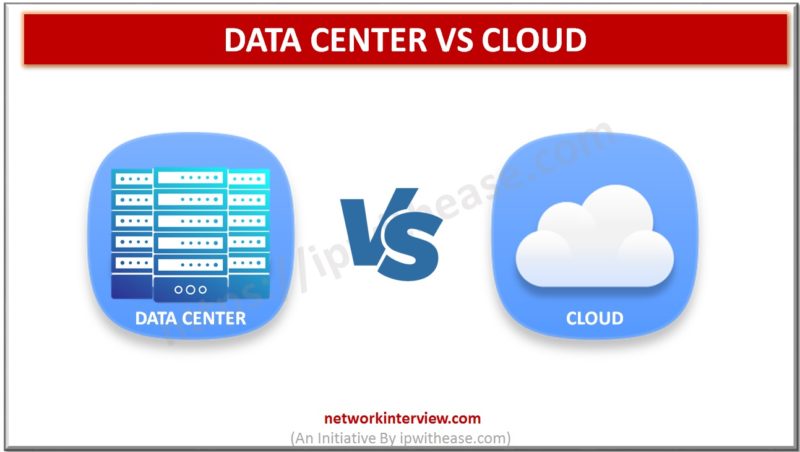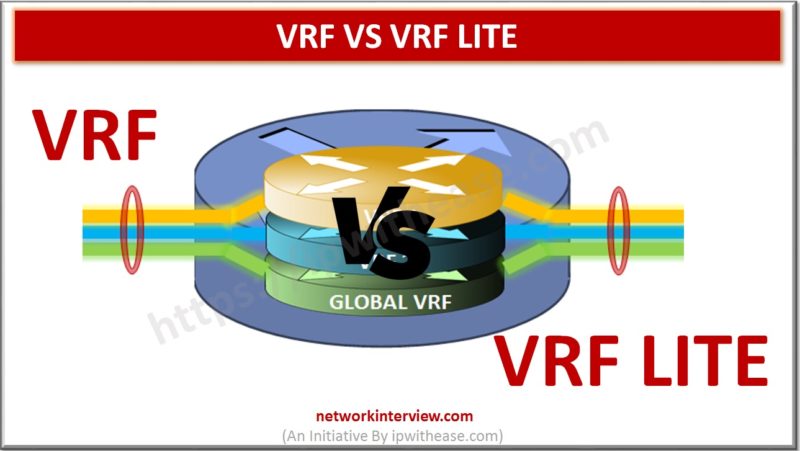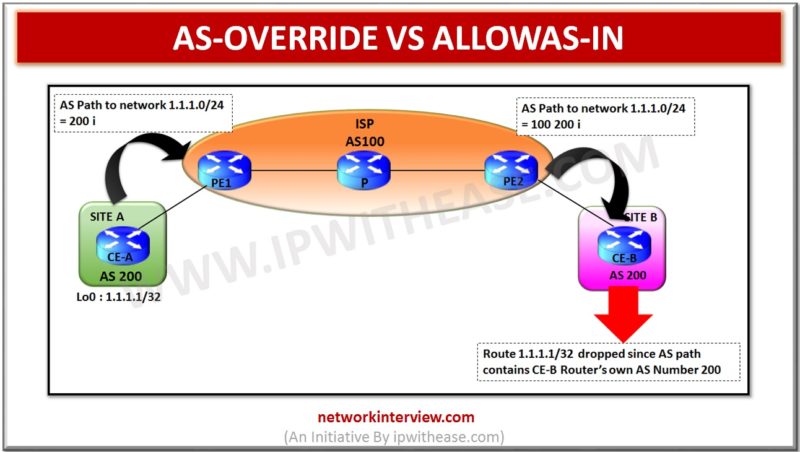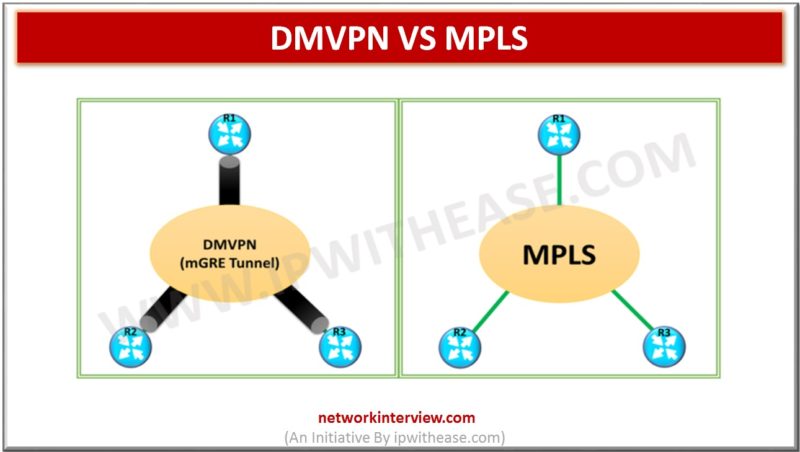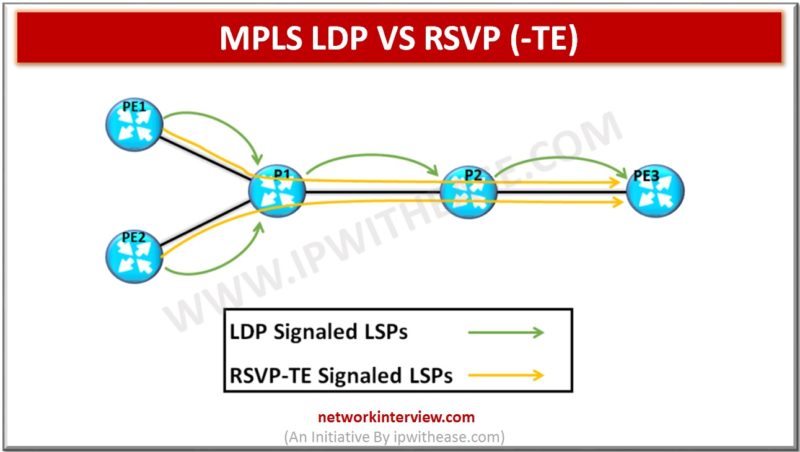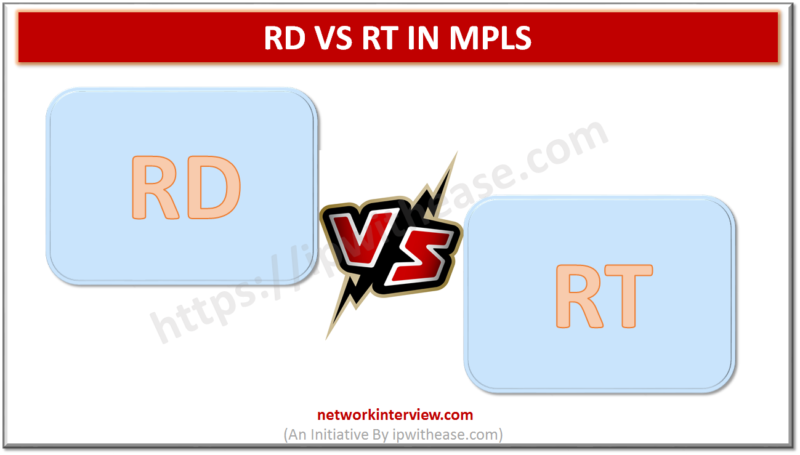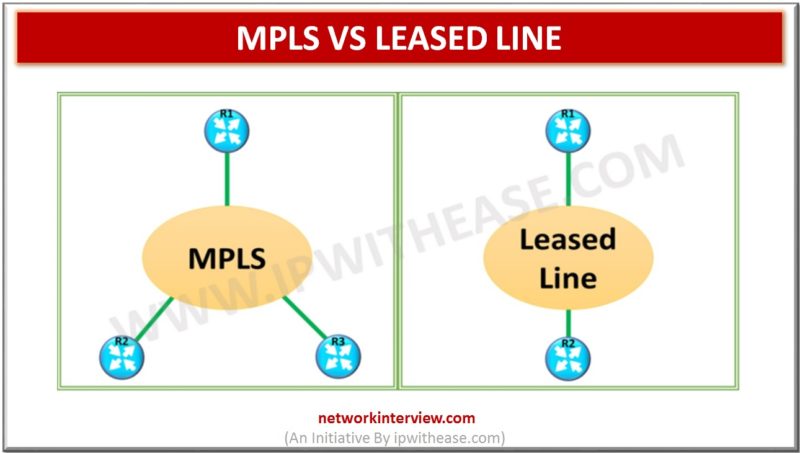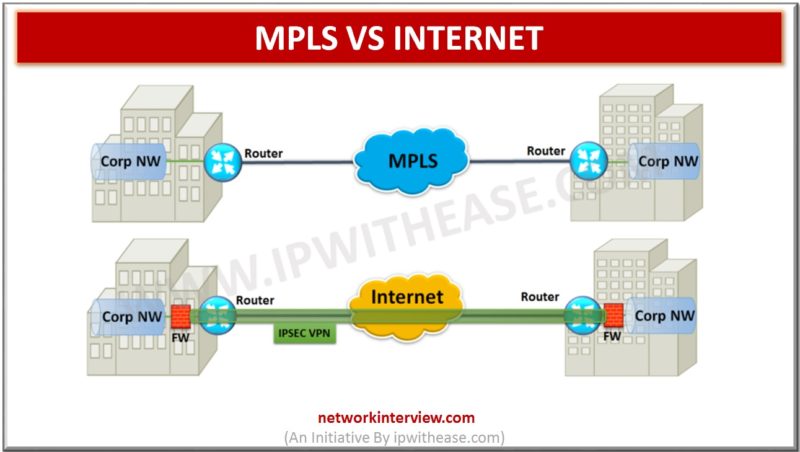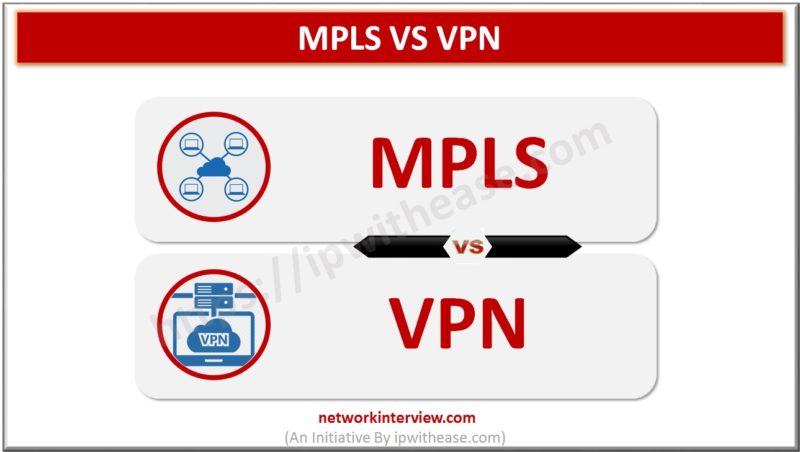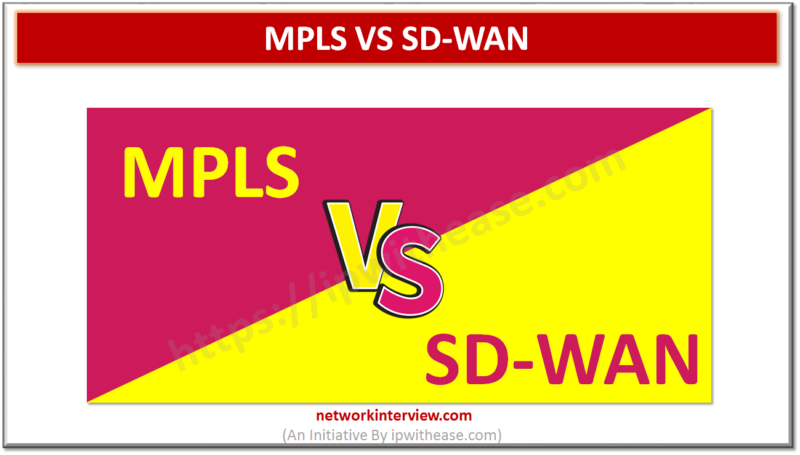Difference between ACL and Firewall: SOURCE:https://ipwithease.com Also refer Stateless Firewall vs Stateful Firewall
Difference between VDC and VRF: S No VDC VRF 1 A VDC virtualizes the device itself by presenting a single device as multiple logical devices. Feature which allows multiple instance of routing table to exist in a Layer 3 device …
Comparison Table: VPC vs VSS SNo VPC VSS 1 Feature specific to Nexus Feature specific to catalyst 6500,4500 Series 2 Separate control plane for both switches. 2 Switches merge to form 1 logical Switch with a single control plane. 3 …
Difference between VLAN and VXLAN: Below table summarizes the differences between the two: PARAMETER VLAN VxLAN Full form Virtual Local Area Network Virtual Extensible LAN Definition Layer 2 partitioned & isolated broadcast domain in a network. Overlay tunnelling scheme where …
Difference between EIGRP and OSPF: EIGRP OSPF Advanced Distance Vector Routing protocol Link State Routing protocol Open standard(informational). EIGRP was converted to open standard in 2013. Open standard of IETF, supported by most vendors. Fast sub-second convergence Slower convergence than …
Difference between VLAN and Private VLAN: S No. VLAN PRIVATE VLAN 1 Different Vlans must belong to different IP subnets. PVLANs belong to the same IP subnet 2 Vlan works in Layer 2 and Layer 3 PVLAN is method to …
Difference between Forward Proxy and Reverse Proxy: SOURCE:https://ipwithease.com
Comparison Table: Cisco PIX vs Cisco ASA Below table describes the difference between Cisco PIX and Cisco ASA firewalls: S No Cisco PIX Cisco ASA 1 Firewall appliance Is firewall and anti-malware security appliance 2 Physical Appliance Physical and Virtual …
Comparison Table: Li-Fi vs Wi-Fi Below table summarizes the difference between Li-Fi and Wi-Fi: FEATURE / PARAMETER LI-FI WI-FI Technology IrDA compliant devices WLAN 802.11a/b/g/n/ac/ad standard Operating Frequency 10,000 times frequency spectrum of radio 2.4 GHz , 4.9 GHz and …
Comparison Table: Stack vs VSS Below table describes the difference between Stacking and VSS: FEATURE STACKING VSS Cabling Uses Proprietary Cabling Uses 10G Interfaces Distance Supported Limited by distance VSS members can be in geographically distant locations Chassis members Scalable …
Comparison Table: Stacking vs Chassis Below table describes the difference between Stacking and Chassis: PARAMETER STACKING CHASSIS Cost Less Expensive More Expensive Ease of Redeployment Easier to resize or redeploy Not easy to resize or redeploy Placement Preferably at Access …
Difference between OSPFv2 and OSPFv3 Below table summarizes the differences between OSPFv2 and OSPFv3: PARAMETER OSPFv2 OSPFv3 Routed Protocol Support IPV4 IPV6 OSPF multicast all routers IP address 224.0.0.5 FF02::5 OSPF DR and BDR multicast IP address 224.0.0.6 FF02::6 Support …
Difference between FlexStack and Stackwise Plus : SOURCE:https://ipwithease.com
Difference between BGP Hard Reset and Soft Reset: PARAMETER HARD RESET SOFT RESET Philosophy This will tear down the TCP connection between the peers and re-establish the connection with a BGP Open message and proceed with the regular message exchanges …
Before discussing eBGP vs iBGP, let’s understand the two protocols briefly. eBGP It is abbreviation for External Border Gateway Protocol and is one of the flavors of BGP protocol. eBGP Routing protocol is used between BGP speaking neighbors which belong …
Below table describes the difference between VRF and VRF Lite: VRF VRF Lite MBGP VPNv4 or MPLS required for running full VRF. VRF-lite is a subset of the MPLS VPN functionality. It supports only the VRF related functionality (no MBGP …
Difference between Traditional WAN & SD WAN Below table summarizes the difference between Traditional WAN and SD WAN technologies: PARAMETER TRADITIONAL WAN SD WAN Bandwidth Crunch When Bandwidth chokes due to high utilization by users or applications , following is …
Below table describes the difference between AS-OVERRIDE and ALLOWAS-IN; PARAMETER AS-OVERRIDE ALLOWAS-IN Overview Used by PE to modify the AS Path so that prefix is not dropped based on BGP default behaviour to disallow its own AS number in the …
Comparison Table : LDP vs RSVP Below table describes the difference between LDP and RSVP: PARAMETERS LDP RSVP Abbreviation for Label Distribution protocol Resource Reservation Protocol Provisioning Easy to configure. We just need to enable on interfaces. Label bindings automatically …
Comparison Table : RD vs RT in MPLS Below table describes the difference between RD vs RT in MPLS: PARAMETER RD RT Abbreviation for Route Distinguisher Route Target Definition 64-bit identifier prepended to IPv4 route used to identify VPN the …
Comparison Table: MPS vs LEASED LINE Below table describes the difference between MPLS and Leased Line: PARAMETER MPLS LEASED LINE Segregation of customer traffic Logical separation of customer traffic. Physical separation of customer traffic Connectivity Type Multipoint or point-to-Point Point-to-Point …
Comparison Table : MPLS vs INTERNET Below table describes the difference between MPLS and Internet: PARAMETERS MPLS INTERNET Carriers Single carrier provides MPLS connectivity for all the locations Not limited to single carrier. Different locations can be connected through various …
Comparison Table: MPLS vs VPN Below table describes the difference between MPLS and VPN: PARAMETER MPLS VPN Scope of Operation Operates on carrier provided Network (Logically segregated to support multiple customers) that will further connect to all customer sites. Operates …
Comparison Table: MPLS vs SD-WAN Below table describes the difference between MPLS and SD-WAN: PARAMETER MPLS SD-WAN Abbreviation for Multiprotocol Label Switching Software Defined – Wide Area Network Provisioning time High Very low Configuration Manual Configuration “Zero Touch provisioning” allows …

